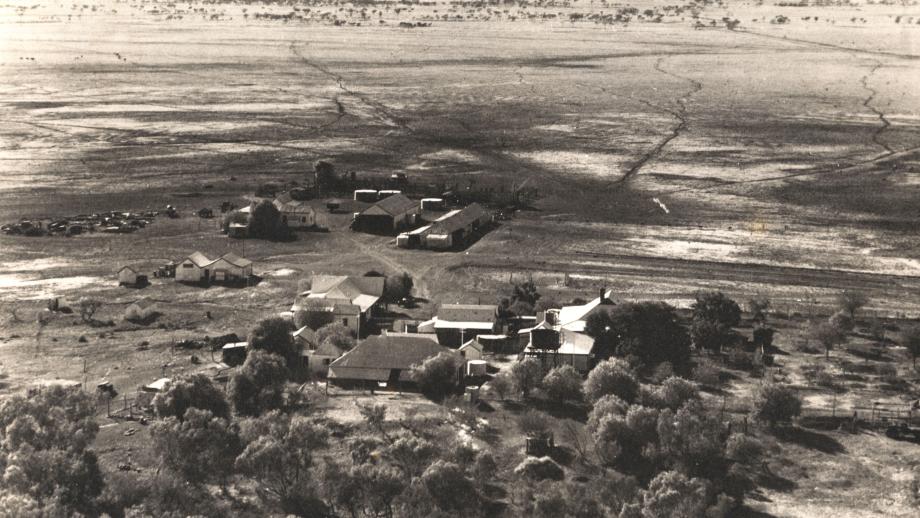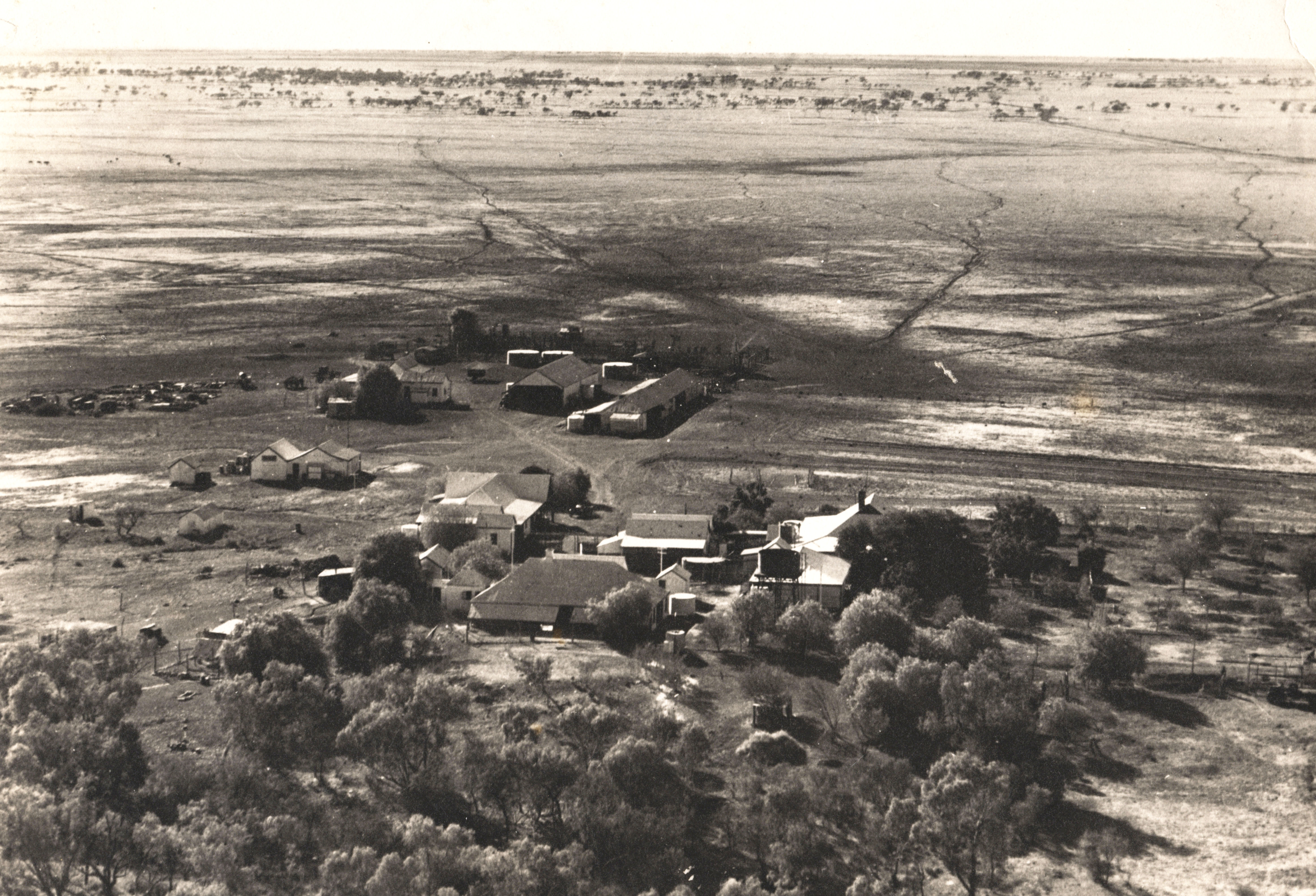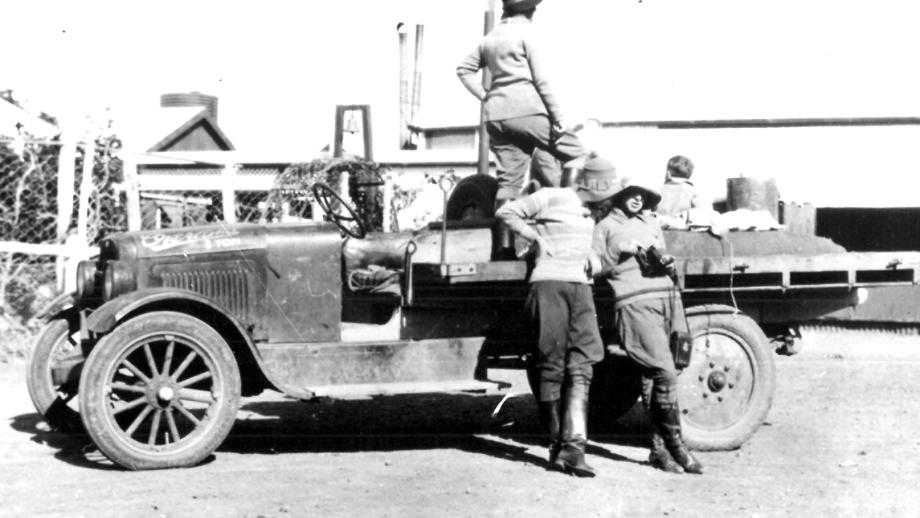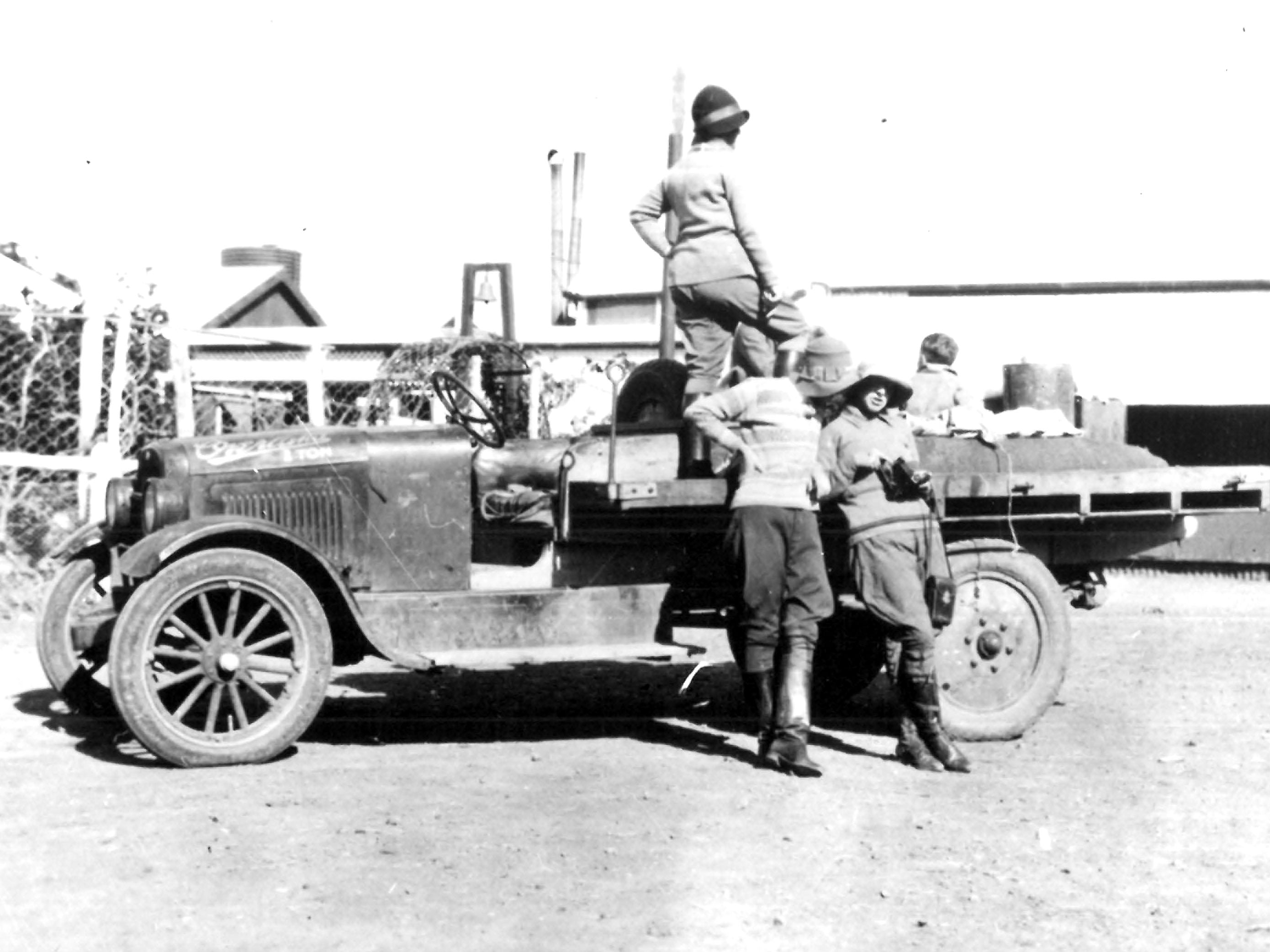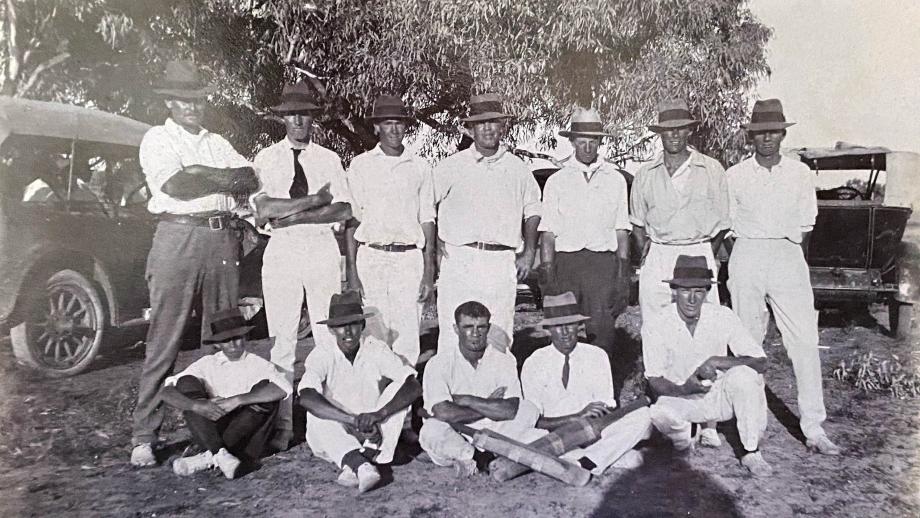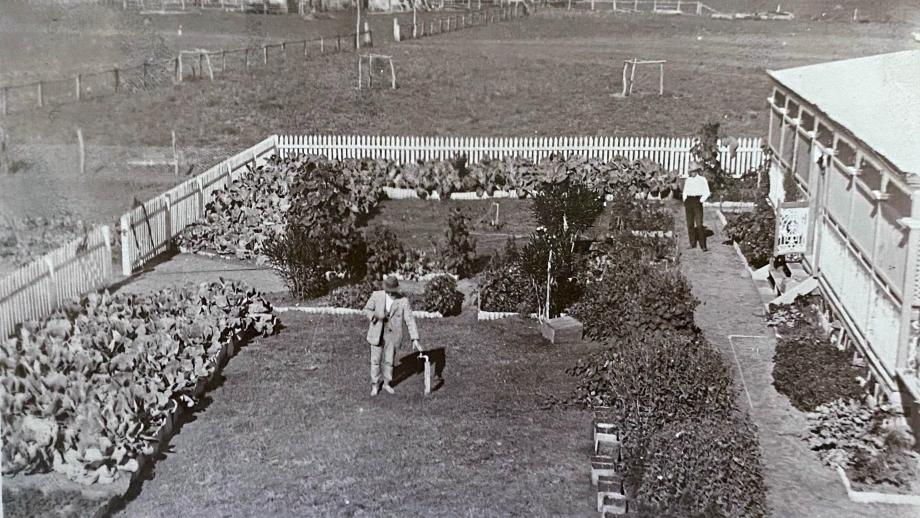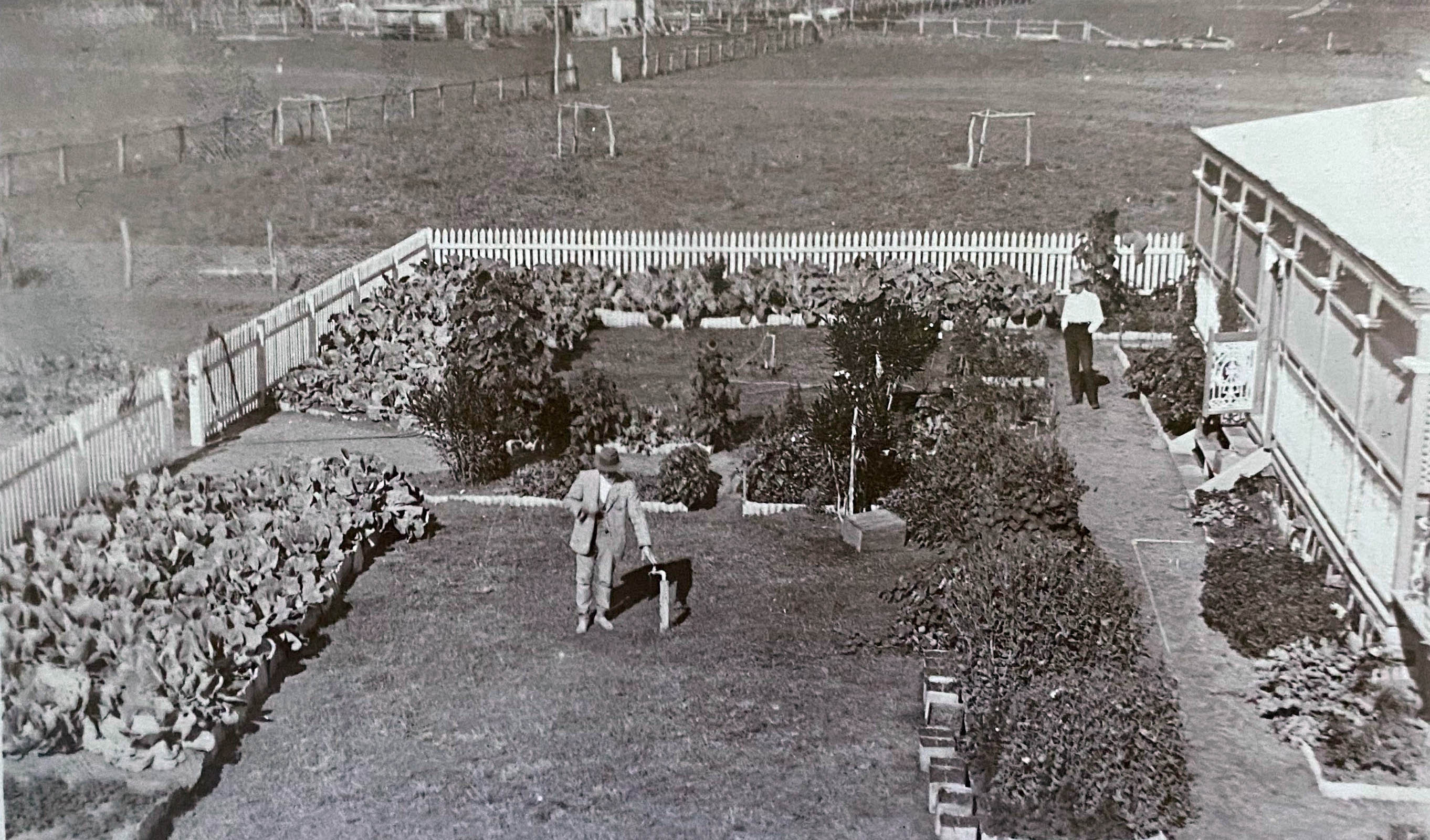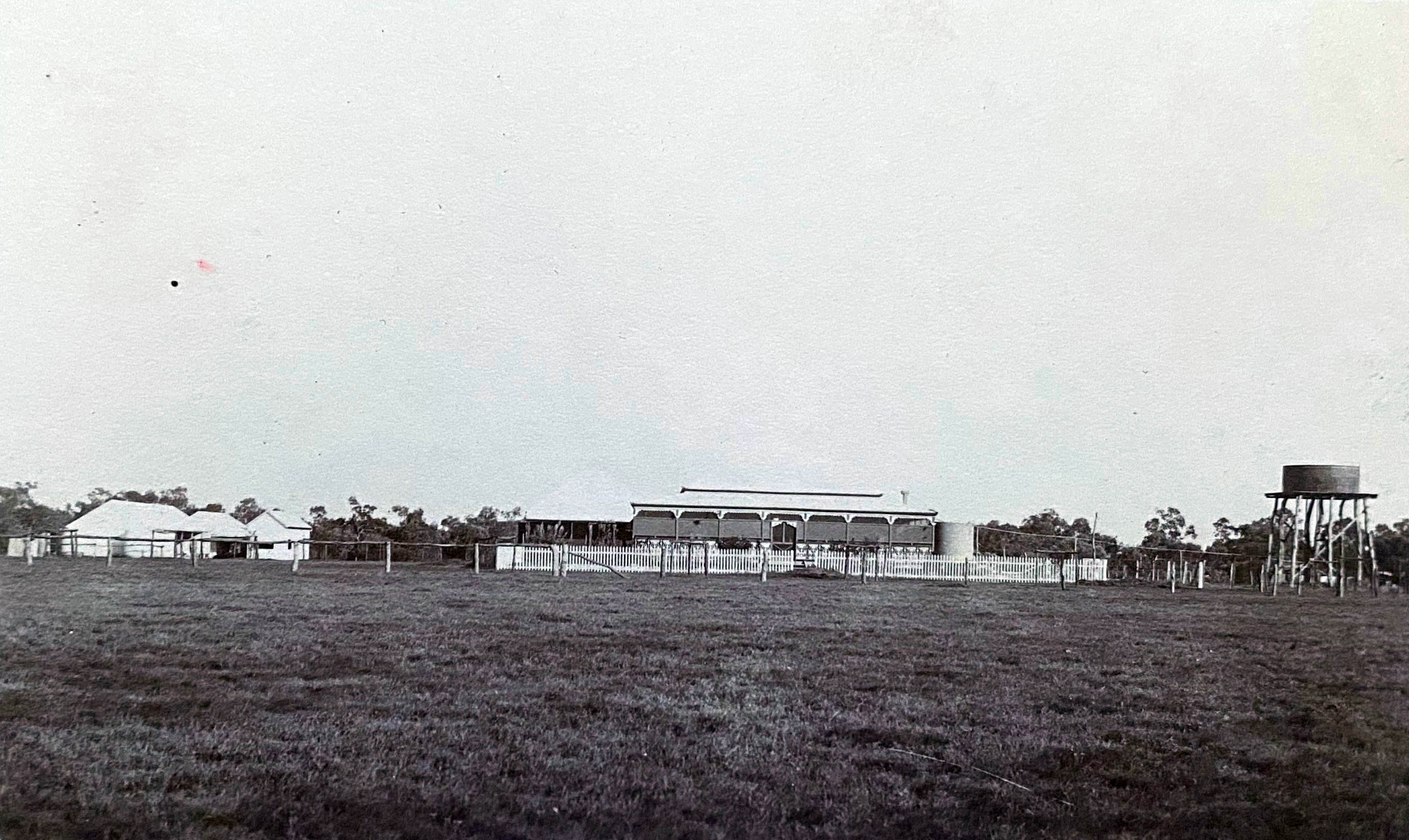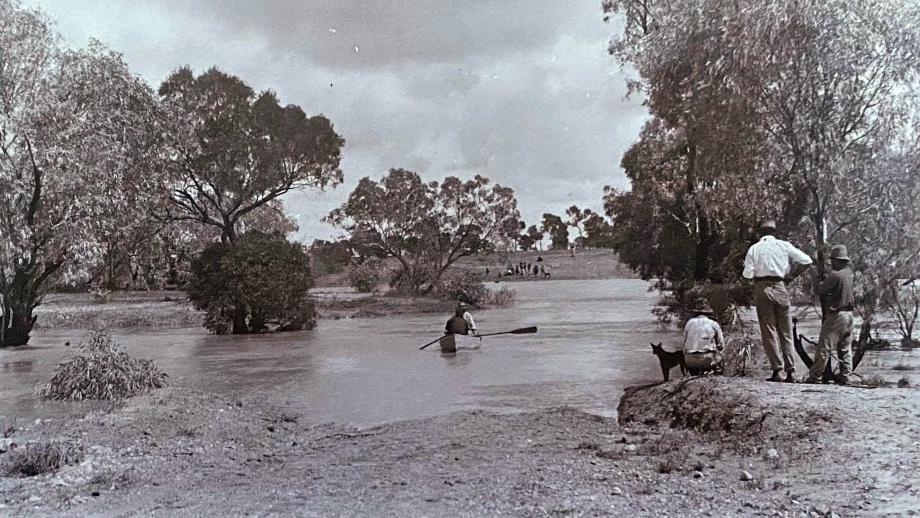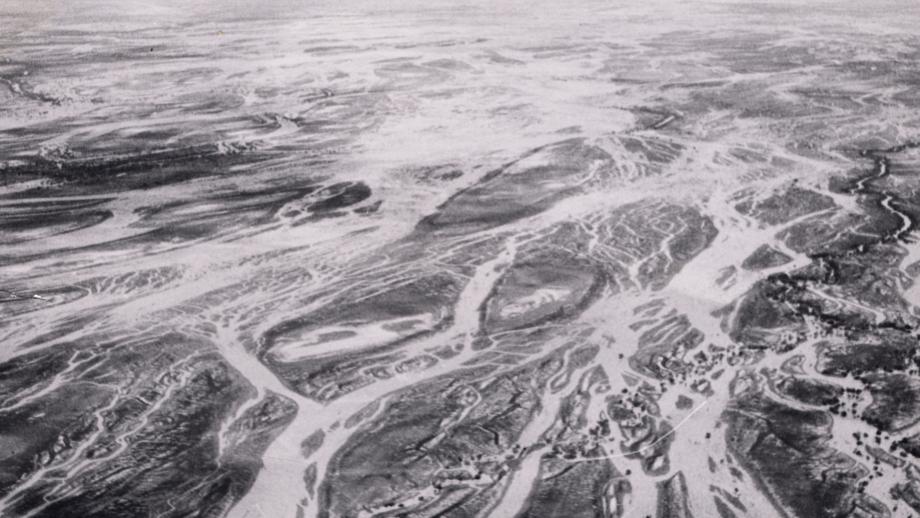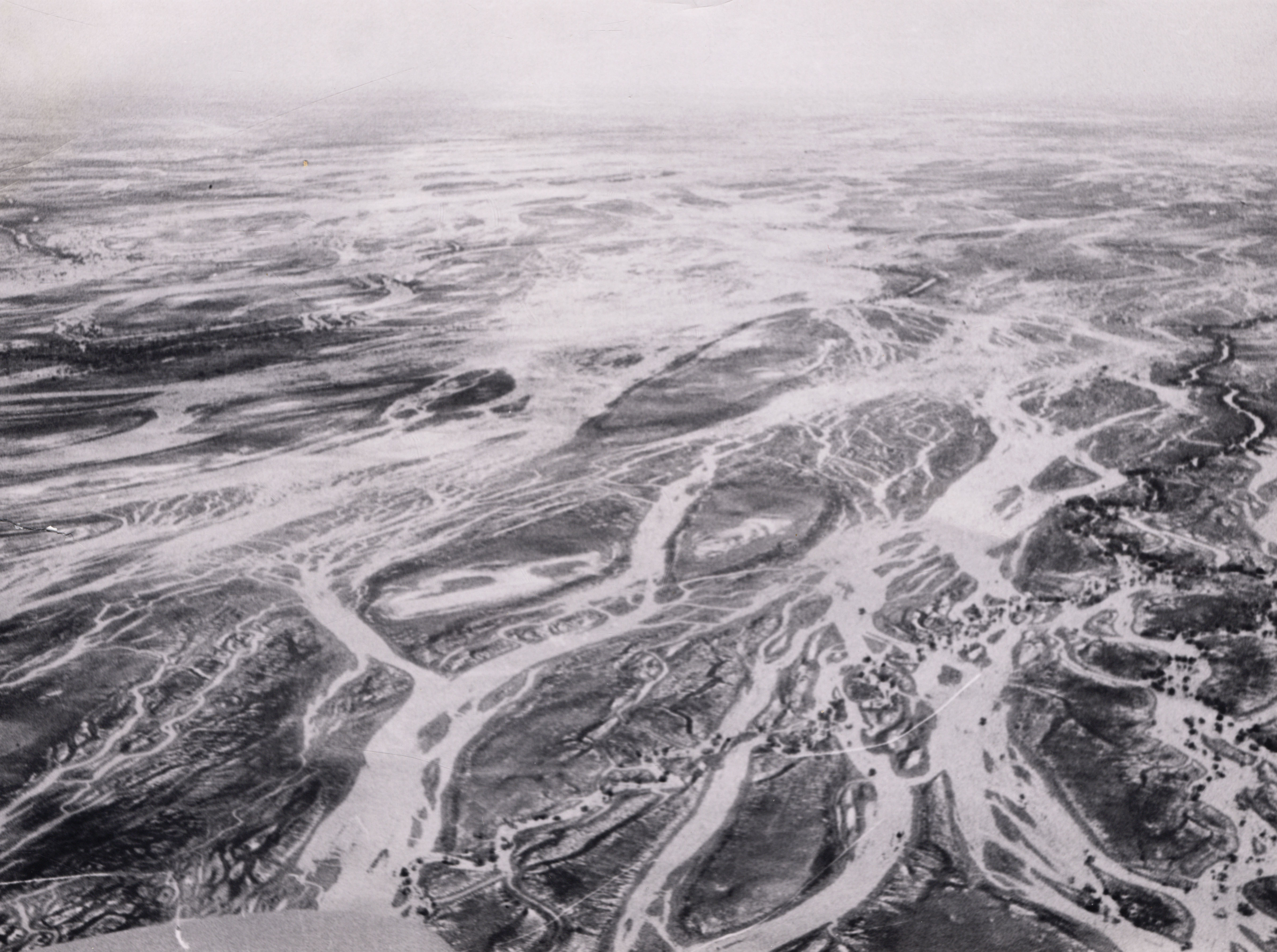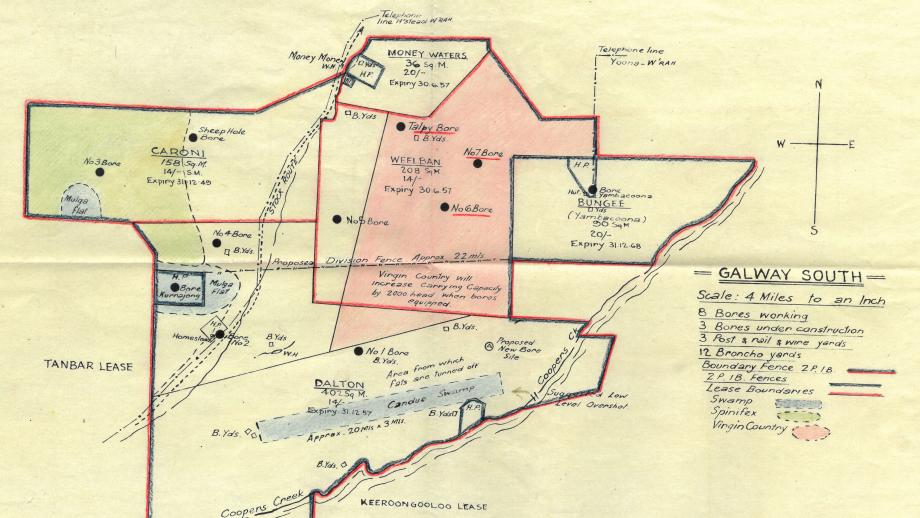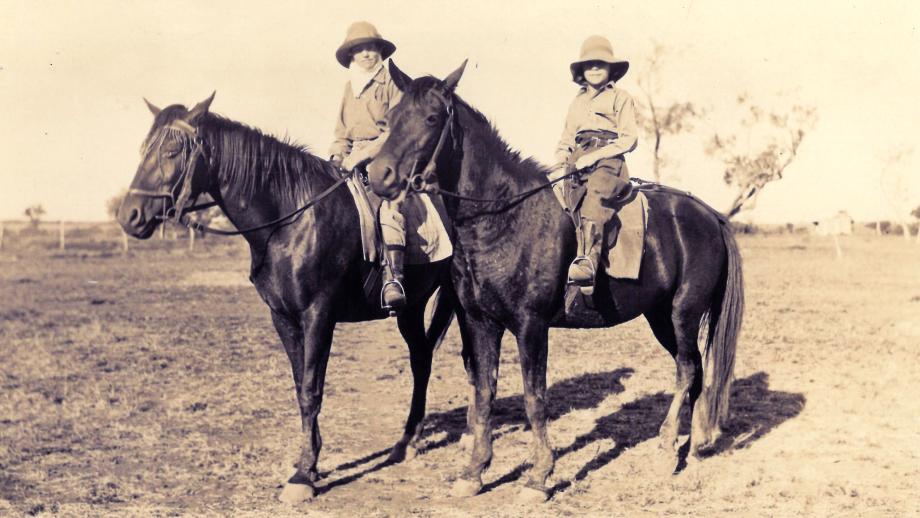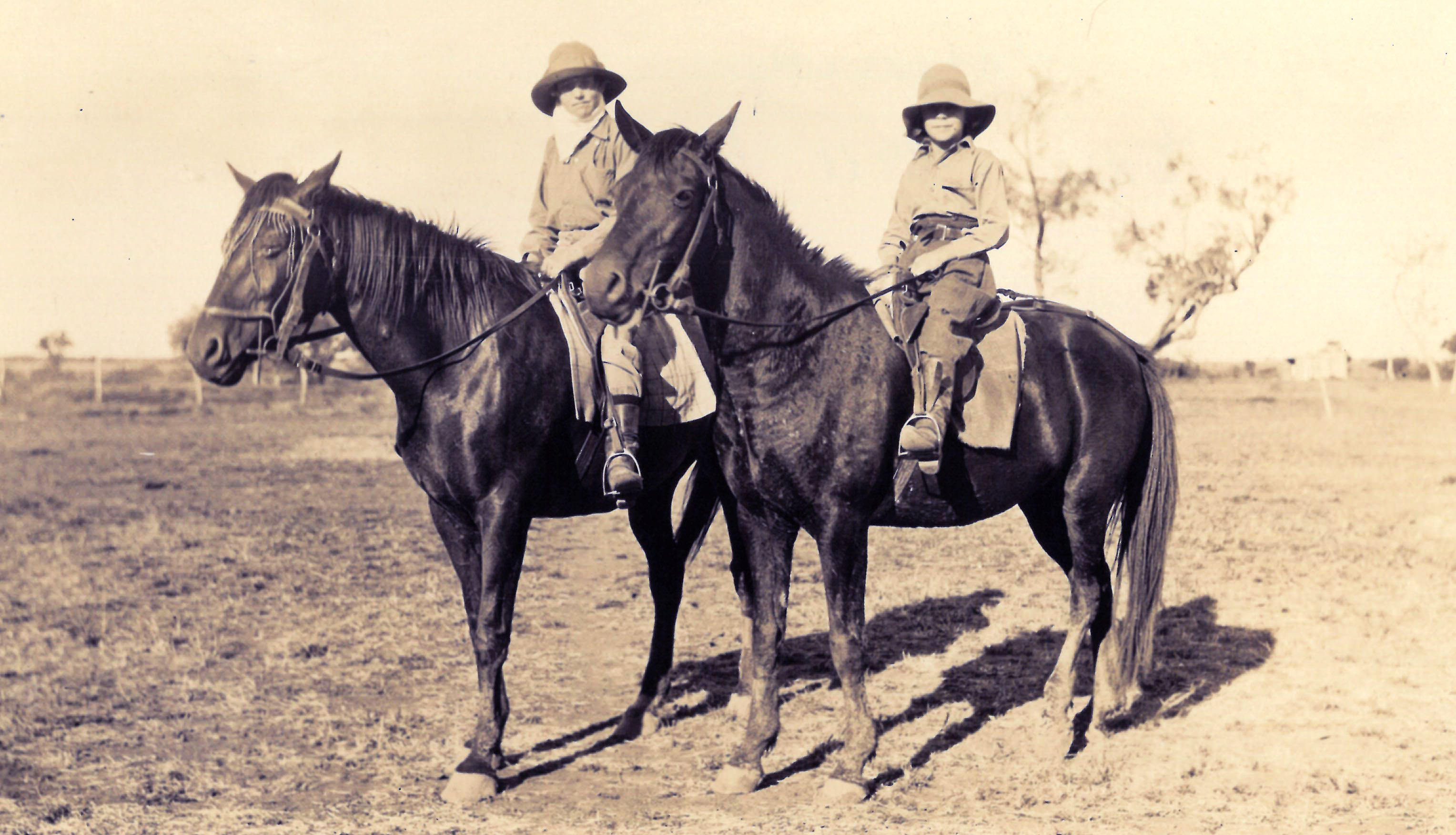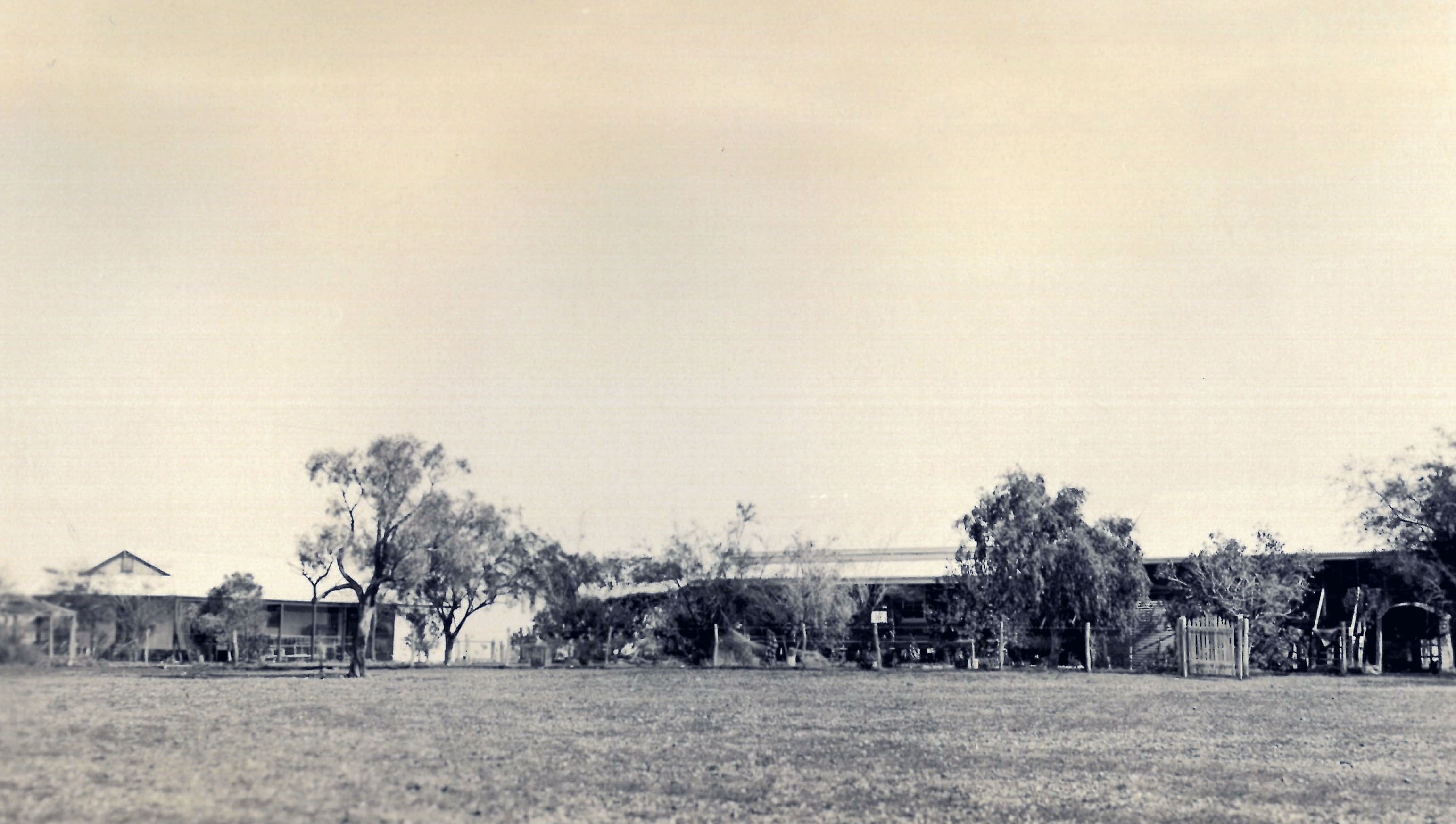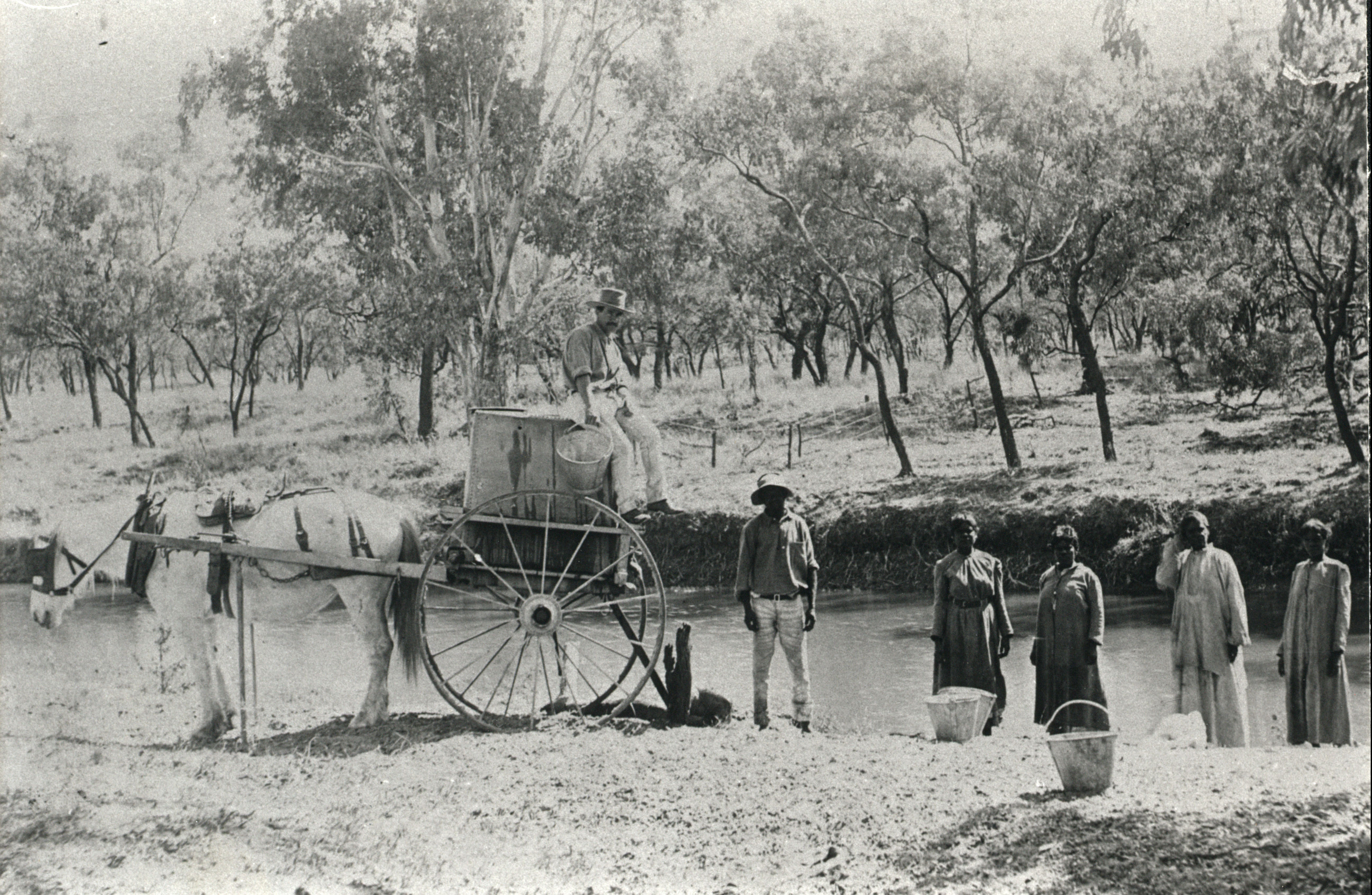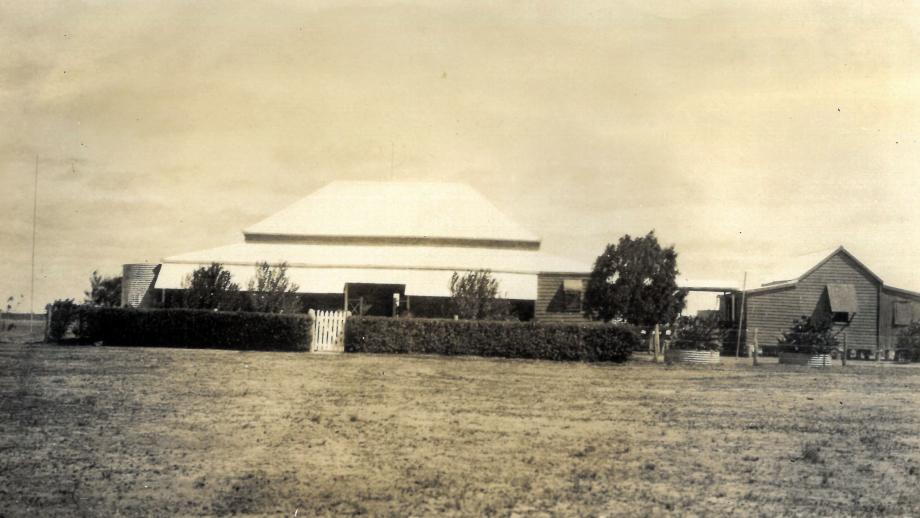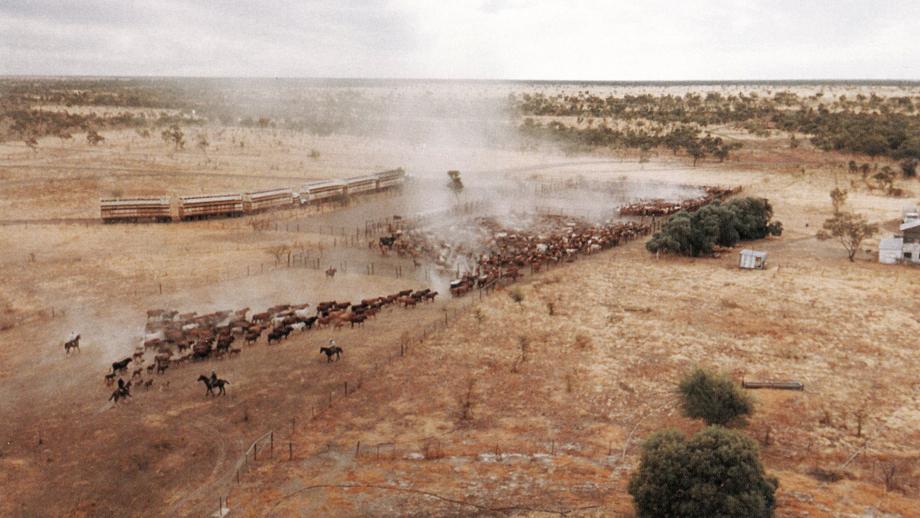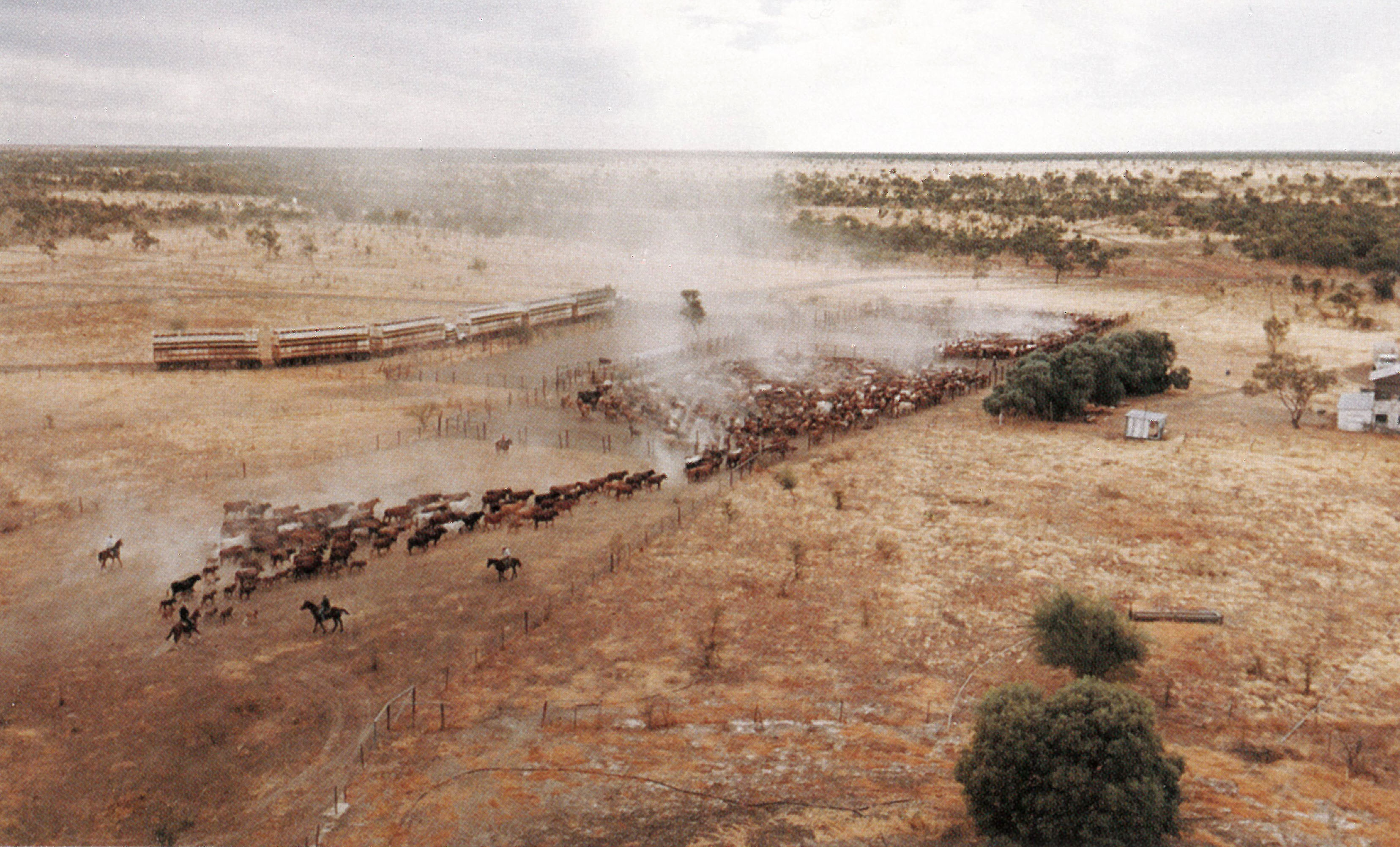Other Queensland Stations
Over its 200 year history, the Australian Agricultural Company, along with the Peel River Land and Mineral Company, has operated dozens of pastoral stations across Australia, particularly in Queensland and the Northern Territory since the early 1900s. The history of some of the Queensland properties is explored below...
Corona Station
Corona Station is located north-west of Longreach, Queensland.
The station was purchased by the Australian Agricultural Company in 1912 and the long-term manager was Thomas Armstrong, who managed the property from 1917 to 1941.
Armstrong was born in 1878 at Gunbar Station, Hay, New South Wales and educated at the Church of England Grammar School in Sydney.
He worked as an overseer at Lissington Station near Bourke and as manager at Urie Point Station near Brewarrina in New South Wales. In 1901 Armstrong moved to Queensland and farmed in the Darling Downs region for a brief period before returning to New South Wales and taking up the position of manager at Euroka Station near Walgett.
In 1917 Armstrong was appointed manager of Corona Station and also worked as an inspector for the Australian Agricultural Company across Queensland. He held local positions as Member, Longreach Shire Council; Deputy Chairman, Longreach Hospital Board; Vice-President of the Executive Council, United Graziers' Association of Qld; Member, North Gregory Rabbit Board; Chairman, Mitchell West Dingo Board; Chairman, Mitchell West Marsupial Board.
Armstrong retired from the Australian Agricultural Company in 1941 and died in Toowoomba in 1944.
The Company retained Corona Station until 1979, when it sold the leasehold of the property. The following year the Company transferred operation of the Corona freehold land to its Maneroo Station.
Bladensburg Station
Bladensburg Station was a pastoral station located just southwest of Winton in Central Queensland. It was one of the first sheep and cattle stations established in the region, founded in the late 1800s.
The Australian Agricultural Company purchased the leasehold for Bladensburg in May 1915, along with the neighbouring Buruda Station, with the properties being conveniently located within 50 miles of the existing Corona Station. The station's first manager was Benjamin Clayton, who ran the property until 1926.
Unfortunately within a year of purchasing Bladensburg, Queensland experienced one of the worst droughts on record and it wasn't until December that any meaningful rain was recorded in the region. Despite this, Bladensburg stood up well and 80,000 sheep were moved from Corona to Bladensburg in July 1916.
In the mid-1900s the property was again impacted by drought and with constant uncertainty about the renewal of the lease, the Company reduced the number of sheep there. With the lease renewed, the Company restocked Bladensburg with sheep and cattle. However, by 1952 Bladensburg was taken over by Elsinora Pty Ltd, a subsidiary of Pastoral Development Holdings.
Having been acquired by the Queensland Government, in 1994 the former Bladensburg Station was gazetted as a 85,000 hectare national park. The homestead, shearing shed, and some outbuildings have been retained, with the homestead having been restored to serve as an information centre and ranger's office.
South Galway Station
South Galway Station is situated in the heart of Channel Country, 400km south west of Longreach, Queensland. Located on Coopers Creek, it is a part of what is regarded as some of the best natural fattening country in the world. The property is a growing out station, backgrounding cattle for the Australian Agricultural Company’s beef brands.
South Galway was established in 1873 by Patrick and Michael Durack and John Costello and was one of the first stations established in the Channel Country. The property was badly affected by drought and was sold to the Queensland Cooperative Pastoral Company, who were then forced to sell the property after entering liquidation in the mid-1880s. In 1937, South Galway was purchased by the Schmidt family. In 1948, the Australian Agricultural Company purchased the property along with Rockhampton Downs.
Dalgonally Station
Dalgonally Station is located 80km north of Julia Creek in Queensland, in close proximity to Carrum Station. The property is a growing out station for cattle from the breeding stations, predominantly running Brahman cattle.
The first lease for Dalgonally was acquired by Scotsmen Donald and Duncan McIntyre in 1866. At the height of his operation, the station ran 41,000 Shorthorn cattle and 400 horses.
Dalgonally was on the stock route to Bourketown, the Northern Territory, and Western Australia. Explorer Ludwig Leichhardt had passed through the station on his expeditions, with two trees marked ‘L’ by him found on the property on the banks of the Flinders River by Duncan McIntyre in June 1864 when he had set out from Dalgonally in search of new stock routes.
In 1912, Dalgonally was sold to the Australian & New Zealand Land Company, with Donald McIntyre having died in 1907. Duncan had died much earlier. In 1866, Duncan was returning to Dalgonally after buying stores in Bourketown. When he contracted Gulf Fever and died on 4 June 1866 by a waterhole nine miles northwest of Dalgonally Homestead. A monument was later built on the property as a tribute to both Donald and Duncan.
In 1947, the property was sold to Australian Estates. The Australian Agricultural Company acquired Dalgonally in 1985.
Within the Dalgonally station complex, there is much history. The social club building was the old shed which the stockcamp ‘camped out’ at for many years from Fullarton yards, and it is surrounded by concrete slabs that originate from one of the old stone buildings on the station.
Under Australian Agricultural Company ownership the property has undergone a considerable development program over the years including three sets of cattle yards, and a series of laneways and internal fencing, which have made the property much more efficient and productive.
Canobie and Wondoola Stations
Canobie Station is located 200km north of Cloncurry and 280km south of Normanton in Queensland. The property is a breeding station running predominantly Brahman cattle, which replaced the property’s Shorthorn herd in the 1970s. The Cloncurry River runs through the property, providing a permanent source of water.
Canobie station was established in 1864 when Edward Palmer, originally from Wollongong, New South Wales, stocked the property with cattle and sheep, with the first wool produced on the property the following year. In the 1860s, explorers Robert O’Hara Burke and William John Wills travelled through the area, and they are commemorated at Canobie by the Burke and Wills Roadhouse which still operates today.
During the late 1800s, the property suffered significant losses from both droughts and floods.
In 1908 Canobie was sold to A.J. Cotton, who in 1912 sold a portion to the New Zealand and Australian Land Company.
The Australian Agricultural Company acquired Canobie in 1985 along with Alcala and Lyrian Downs several years later. Canobie is run in conjunction with Wondoola Station, where a Royal Australian Airforce landing strip was constructed during the Second World War.
Wondoola Station is run in conjunction with Canobie. It is located between the Saxby and Flinders River systems in Queensland, 130km south of Normanton and 480km north-east of Mount Isa. The property is a breeding station running predominantly Brahman cattle.
Wylarah Station
Wylarah is located in Central Queensland, 15 km from Surat, the nearest service town, and 450km west of Brisbane, Queensland.
Wylarah comprises six properties - Wylarah, Cadny Downs, Talavera, Newington, Borah, and Didgeridoo.
Wylarah is used to breed the Westholme Wagyu herd to produce full blood bulls for the Australian Agricultural Company commercial herds, and to produce feeder steers. Wylarah also acts as a backgrounding property for the Aronui Feedlot near Dalby, Queensland.
Carrum Station
Carrum Station is located 26km south of Julia Creek and 278km east of Mount Isa in Queensland.
Carrum comprises what were once five separate properties. In the 1970s, Brazilian pastoralist Sebastian Maia purchased the properties and Carrum was created to be used primarily as a bullock depot in conjunction with his property Lawn Hill Station.
Since purchasing the property, the Australian Agricultural Company has used Carrum as a backgrounding property and more recently it has operated as the Composite Bull Breeding Unit.
Goonoo Feedlot
Goonoo is a feedlot, backgrounding and farming property located 65km from Emerald and straddling the Comet River in Central Queensland.
To increase the quality of its feed supply, the Australian Agricultural Company purchased two properties near Comet in Central Queensland - Galgatha and Milperoo – these were eventually named Goonoo.
The Goonoo Feedlot was established in 1994 and has a carrying capacity of 45,000 head of cattle.
Aronui Feedlot
Aronui is the oldest commercial feedlot in Australia. It was established in 1964 and purchased by the Australian Agricultural Company in 2002.
Aronui is situated on a basalt ridge near Dalby in Queensland and is fortunate to draw its water supply from underground bores in the Great Artesian Basin.
It currently carries 22,000 head of cattle and employs 35 people.
